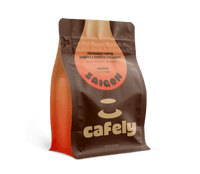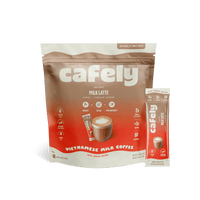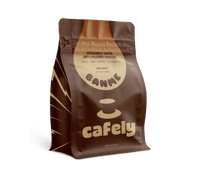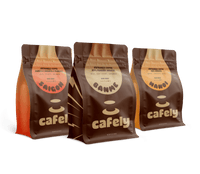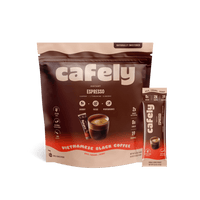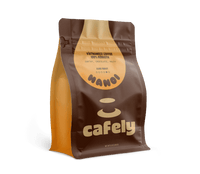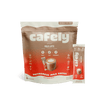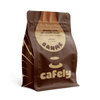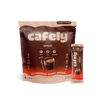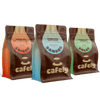Have you ever placed your percolator on the stovetop or over the campfire only to wonder how long you should leave it brewing?
We cover everything worth knowing about percolating coffee, including the length of time you should percolate it, how to use a percolator, and what happens if you let it brew for too long.
Coffee should be percolated for approximately 7–10 minutes, depending on how strong you want your coffee to be.
Start the timer when the water starts to boil (you can hear the liquid bubbling).
How to Make the Perfect Coffee Using a Percolator
Compared to using a French press or drip coffee maker, percolating coffee may seem a bit dated. Percolated coffee, however, can have rich, deep, well-rounded flavors.
Using a percolator can seem daunting, but fear not. They’re not hard to use, and a key tip for coffee percolation is to keep things slow. Part of knowing how to use a coffee percolator is to recognize the importance of remaining patient. Don’t rush the process, as the temperature of the water needs to increase slowly and steadily.
Let’s go over how to use a coffee percolator on the stove step by step:
Step 1: Add Water to the Percolator Reservoir

Before making your cup of coffee, you’ll first need to ensure the percolator is clean and free of any grounds or residue from its last use. Once cleaned, add the desired amount of water to the reservoir.
Step 2: Add Coffee Grounds

Using a filter in your percolator isn’t a must, but it’s recommended since it reduces the sediment and can improve the taste.
Some research suggests a filter can actually help limit the total cholesterol in coffee. Filtered coffee doesn’t have a negative effect on cholesterol as the filter traps the fatty substances. This is something to bear in mind if you’re concerned about cholesterol levels.
Coarse or medium-coarse grounds are ideal to use in a percolator as long as you don’t add too many grounds! Overfilling the percolator can cause issues during the brewing process. Use one tablespoon of coffee grounds per 8 oz of water. Any less will result in a weaker coffee, and much more can stop the water from percolating correctly.
Related: Where to Buy Authentic Vietnamese Coffee?
Step 3: Heat the Water (Stovetop)

Once you’ve re-assembled the percolator and all parts are secured, it’s time to start brewing! Use medium heat and stay by the stove to ensure no steam begins to pour out.
Ideally, the water should be hot but not boiling; otherwise, this can result in bitter coffee.
Listen for the sound of the coffee heating and percolating, then turn the heat to low and brew for 7-10 minutes.
Step 4: Remove the Percolator from Heat

Once the coffee has finished percolating, take it off the stovetop and remove the basket containing the coffee grounds. Allow the fresh coffee to sit for a couple of minutes before serving, so any loose grounds can sink to the bottom of the percolator and the coffee can cool slightly.
Our bestselling dark roast, SaiGon OG Blend, is available in both whole beans and grounds and is ideal for percolating. This combination of arabica, robusta, and peaberry provides a well-balanced cup of coffee.
How Long Do You Let Coffee Percolate?
The optimal timeframe to let coffee percolate is 7-10 minutes, which gives the coffee plenty of time to infuse the water with robust flavor.
Leaving coffee to percolate for longer than 10 minutes causes the coffee to taste bitter, overriding the smooth flavors. Provided the percolator is exposed to even heat and the coffee isn’t over-brewed, you should be left with a balanced cup of coffee each time.
Troubleshooting Percolators Using Brew Time
Using a percolator is just as much an art as it is a science. While it’s easy to recommend a time frame (7–10 minutes) for excellent coffee, most people will need to tweak this slightly to match their specific setup. The heat distribution of your stove, the size and material of your percolator, and the coffee you’re using can all impact the perfect brew time.
Here’s a simple guide on troubleshooting the percolation time:
- My coffee is weak and unbalanced — You probably under-percolated. Let your percolator sit an extra 2–4 minutes next time.
- My coffee tastes burnt and bitter — You probably over-percolated. Take your percolator off the heat 1–3 minutes sooner or reduce the heat slightly once the coffee starts percolating.
- My first coffee tasted great, but the second cup it super bitter — Your coffee continued to steep after taking it off the heat. To avoid this, transfer any coffee left over in the percolator to a fresh thermos to prevent it from continuing to extract after the coffee is finished brewing.
- My coffee is too acidic — This could be a combination of using too much coffee and not letting it brew long enough.

FAQs: Brewing Coffee
Do you have more questions about how to make coffee in a percolator? Here are our answers to some popular questions.
1. How do you know when percolated coffee is done?
The percolator makes a distinctive whistling sound when the coffee is percolating. You’ll also hear the coffee bubbling, which should happen after 7-10 minutes of brewing.
2. Can you percolate coffee for too long?
Percolating coffee for longer than 10 minutes makes a stronger brew, but it also makes the flavor of the coffee very bitter. If you prefer to make a stronger coffee, add more grounds to the percolator instead of leaving it on the stove for an extended period.
3. Do you use cold or hot water in a percolator?
Cold water is best in a percolator as the water temperature needs to increase slowly over several minutes. Using hot water reduces the processing time, which may not result in the intense but balanced brew you’re looking for.
4. What are the drawbacks of a coffee percolator?
Common drawbacks of using a coffee percolator include the length of time it takes to brew, and the potential to easily over-extract the coffee by leaving it percolate for too long. Percolated coffee includes a few steps and more time than some other coffee brewing methods, which can be a disadvantage if you’re strapped for time.
Related: How to Brew Coffee With a Moka Pot
5. What are the benefits of a coffee percolator?
One of the biggest benefits of using a coffee percolator is the delicious mugful of coffee you’re left with. Provided the process isn’t rushed, and the percolator is exposed to even heat, percolated coffee produces strong, flavorful coffee as it has a longer brewing time.
Related: How to Brew Coffee with Vietnamese Phin Filter?
References
- Urgert R, Katan MB. (1997). The cholesterol-raising factor from coffee beans. National Center For Biotechnology Information.
- Chaugule, A., Patil, H., Pagariya, S., & Ingle, P. (2019). Extraction of caffeine. International Journal of Advanced Research in Chemical Science, 6(9), 11-19.
